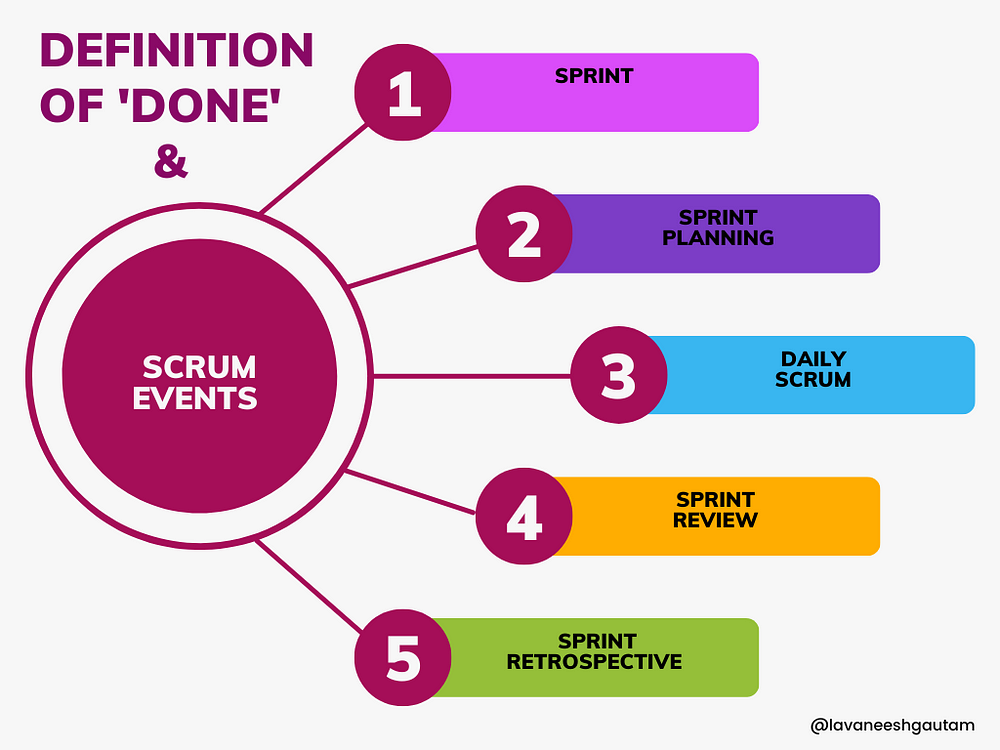
The Definition of ‘Done’ is probably the most misunderstood concept of the Scrum framework. In this article we will discuss:
- What Is the Definition of ‘Done’
- How it can be used in Scrum Events
What Is the Definition of ‘Done’
“The Definition of Done is a formal description of the state of the Increment when it meets the quality measures required for the product.” Scrum Guide 2020
The Definition of ‘Done’ provides a shared understanding among Creators-(The Scrum Team- Developers, Product Owner, and Scrum Master) as well as Inspectors (the stakeholders). It defines what it means for the work to be complete.
The aim of a Sprint is to create a ‘Done’ potentially releasable increment. Hence Definition of ‘Done’ plays a critical role in the successful implementation of the Scrum framework in delivering value. It is the commitment for one of the Scrum artefacts ‘Increment’.
It supports empiricism by providing transparency via building a shared understanding of what elements are required during product development to convert a Product Backlog Item (PBI) into a usable, valuable, potentially releasable Increment.
Who is Responsible for the Definition of ‘Done’
Having a Definition of ‘Done’ is the entire Scrum Team’s responsibility. However, if there are some organisational level norms then teams must adopt those as the minimum and expand whenever needed.
For example, many organisations have to follow some industry regulations, standards, etc. These regulations and standards are applied to the products as well and hence should be part of the Product’s Definition of ‘Done’.
Another example, there could be some organisation-level security policies and standards that all products must adhere to. These standards and policies should become part of the Definition of ‘Done’.
Scrum team can also add their technical and product quality criteria to make the product usable, valuable and potentially releasable. They can also add some internal processes that can enhance the overall quality of the product. For example Code Reviews, Pair Programming, Automation Testing etc.
Definition of ‘Done’ in relation to 5 Scrum Events
The Definition of ‘Done’ supports the Scrum framework throughout the Scrum framework. It supports Scrum Events.
1. Sprint Planning
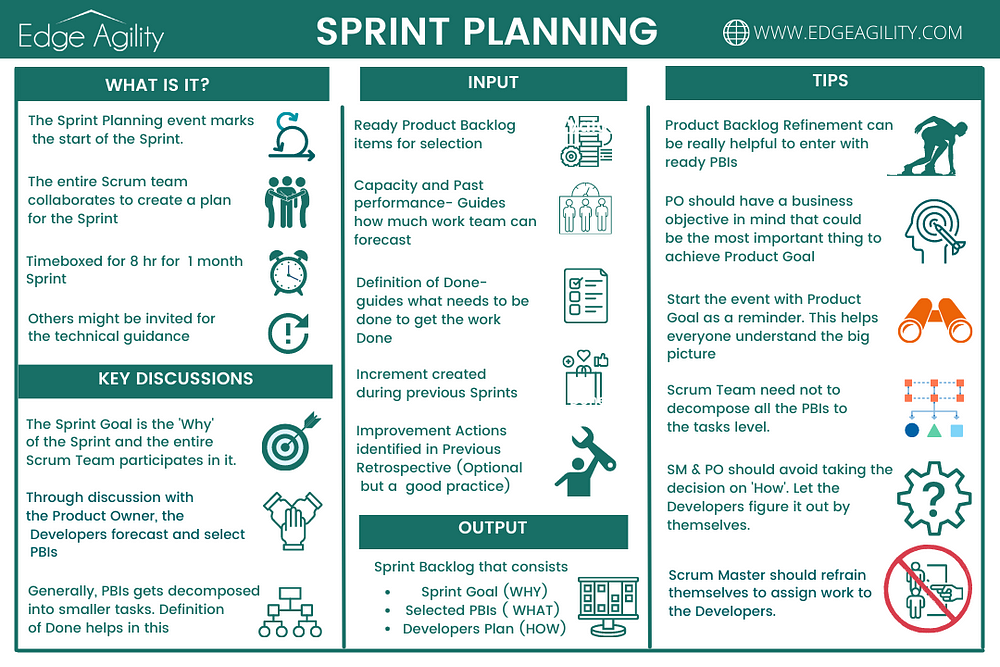
The Definition of ‘Done’ helps the Scrum Team to understand what activities will be required to complete the work and hence helps in decomposing the Product Backlog Items into an actionable plan. Based on this developers can forecast how much effort it will take to convert a product backlog item into a done increment. This further helps the Scrum team select the amount of work that can be pulled from the Product Backlog.
For example, The Definition of ‘Done’ may have one process element ‘Create Release Notes’. The team needs to consider how much time it can take to write notes for features it is building and plan its Sprint accordingly.
💡Tip: Make the Definition of ‘Done’ visible throughout the Sprint Planning. Ask Dedvelopers to refer to it frequently.
2. Daily Scrum
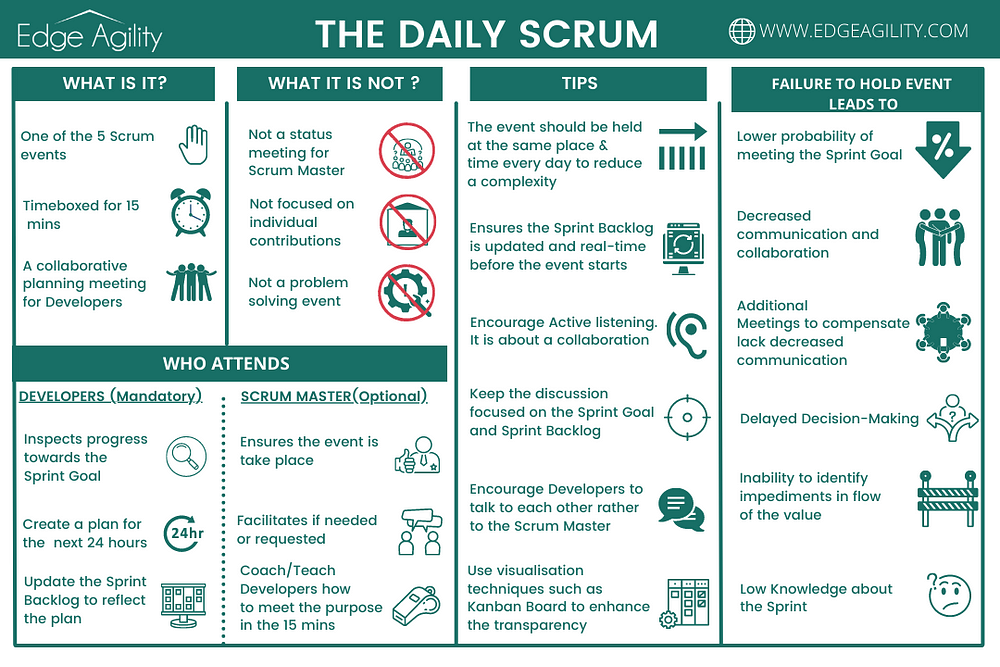
The Definition of ‘Done’ helps teams to realise that even if an individual member(s) has completed his/her tasks related to a product backlog item, that item will not be considered as ‘Done’ until the definition is met altogether. It helps builds a ‘Team Goal over Individual Goal’ mindset and daily scrum is the best event for that.
💡Tip: Build a workflow that can represnt how a Scrum Team reaches to ‘Done’. Use columns to represent this flow. Start right to left during Daily Scrum. Items at right are more closer to ‘Done’ and hence can convert into value.
(for more attend Professional Scrum with Kanban course)
3. Sprint Review
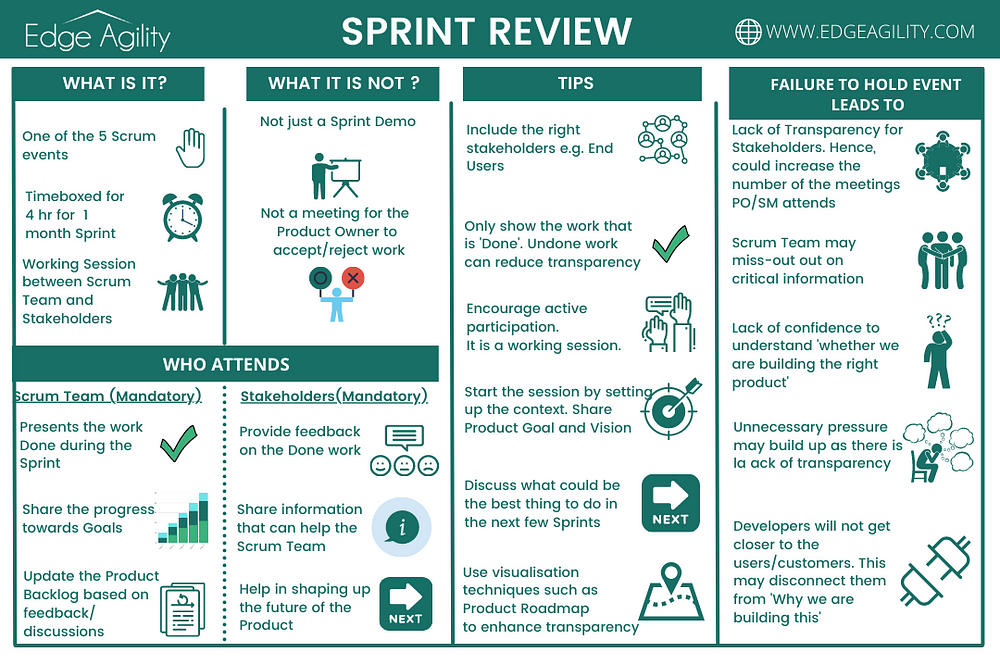
The definition of ‘Done’ provides a shared understanding between Stakeholders and the Scrum team about what ‘Done’ means. It provides a shared understanding of the quality criteria that the product currently has. This enhances transparency among participants and supports empiricism.
Scrum Team gets the best feedback when they share the ‘Done’ Increment with stakeholders. Undone work reduces transparency and sometimes can cause confusion and unrealistic expectations.
If a Product Backlog item does not meet the Definition of Done, it cannot be released or even presented at the Sprint Review. Scrum Guide 2020
Sometimes, Sprint Review can also be a trigger for the adaptation of the Definition of ‘Done’.
A story from trenches

Photo by Brian McGowan on Unsplash
Once upon a time in 2017–18, I was part of a Mobile App development for a Financial Services company. As the product was very strategic, many senior leaders were interested in it and were part of regular Sprint Reviews. During one of the initial Sprint Reviews, when we shared the Increment with the stakeholders and start discussing the future roadmap,
the Head of Digital asked us ‘Hello everyone, I can’t see any element of GDPR’ (people who don’t know what GDPR is. It is a Data Protection Regulation in Europe).
I as Product Owner had no clue about GDPR then and replied, ‘GDPR…What is GDPR?’.
Now, you must be laughing but I really didn’t know that time. GDPR regulations were very new. However, that discussion triggered not only the future Product Backlog Items but also the need for the adaptation of the Definition of ‘Done’.
4. Sprint Retrospective
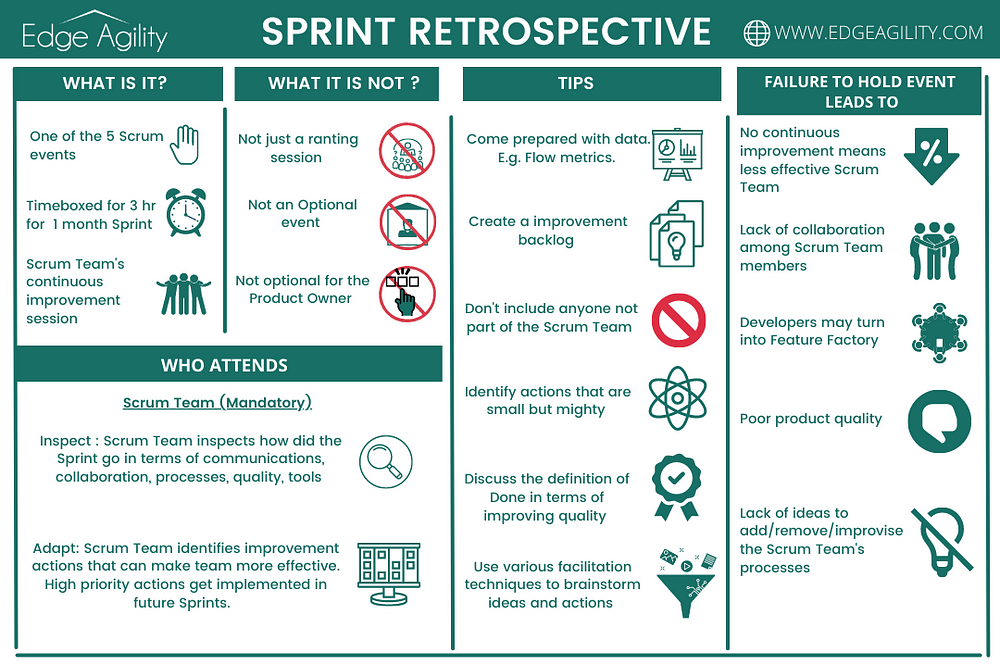
This is the best event where the Definition of ‘Done’ gets adapted to improve product quality and internal processes. Many teams start with a less stringent Definition of ‘Done’ during initial Product Development. However, the long-term goal should be to reduce the technical debt that could be accumulated because of the less stringent Definition of ‘Done’.
For example, when I first developed my e-learning course, the Definition of ‘Done’ was not very stringent. It didn’t have elements such as ‘No grammatical mistakes’, ‘Must have the same font throughout the course’, etc. My focus was more on content. But I learned from the feedback and the Definition of ‘Done’ got better over time by adding more quality criteria.
5. Sprint
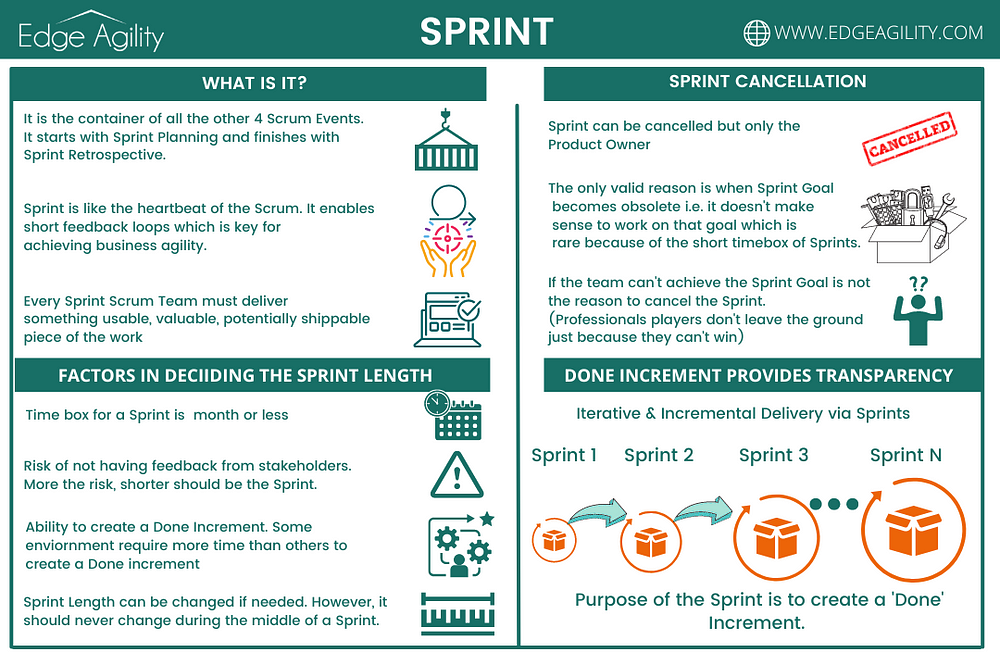
Sprints are the heartbeat of Scrum, where ideas are turned into value. All the work necessary to achieve the Product Goal, including Sprint Planning, Daily Scrums, Sprint Review, and Sprint Retrospective, happen within Sprints. Scrum Guide 2020.
Sprints provide the consistency that helps in managing the complexity of Product Development. How do we select the Sprint length also depends upon the Scrum Team(s) ability to create the ‘Done’ Increment. Hence, the Definition of ‘Done’ plays an important role in that. ( For more, read my article How Long A Sprint Should Be. )
All the work to meet the Product Goal, Sprint Goal happens within the Sprints. How can we reach our goals without a ‘Done’ Increment?
Our commitment towards having a ‘Done’ Increment turns ideas and assumptions into value. Throughout the Sprint, Developers should keep the Definition of ‘Done’ in their mind.
Our job is not to complete Jira/Rally tickets. Our job is to deliver value via having a ‘Done’ Increment.
End Note
Not having a good Definition of ‘Done’ or not following it is one of the main reasons for the poor quality of the product and accumulating technical debt. This reduces the sustainability and scalability of the product in the long run. Sometimes this inability to sustain and scale cripples organisations.
Next Article: Dysfunctions and Tips for Definition of ‘Done’. Stay tuned.
To learn more about the Definition of ‘Done’. Join Professional Scrum Master or Professional Scrum Master II courses.
